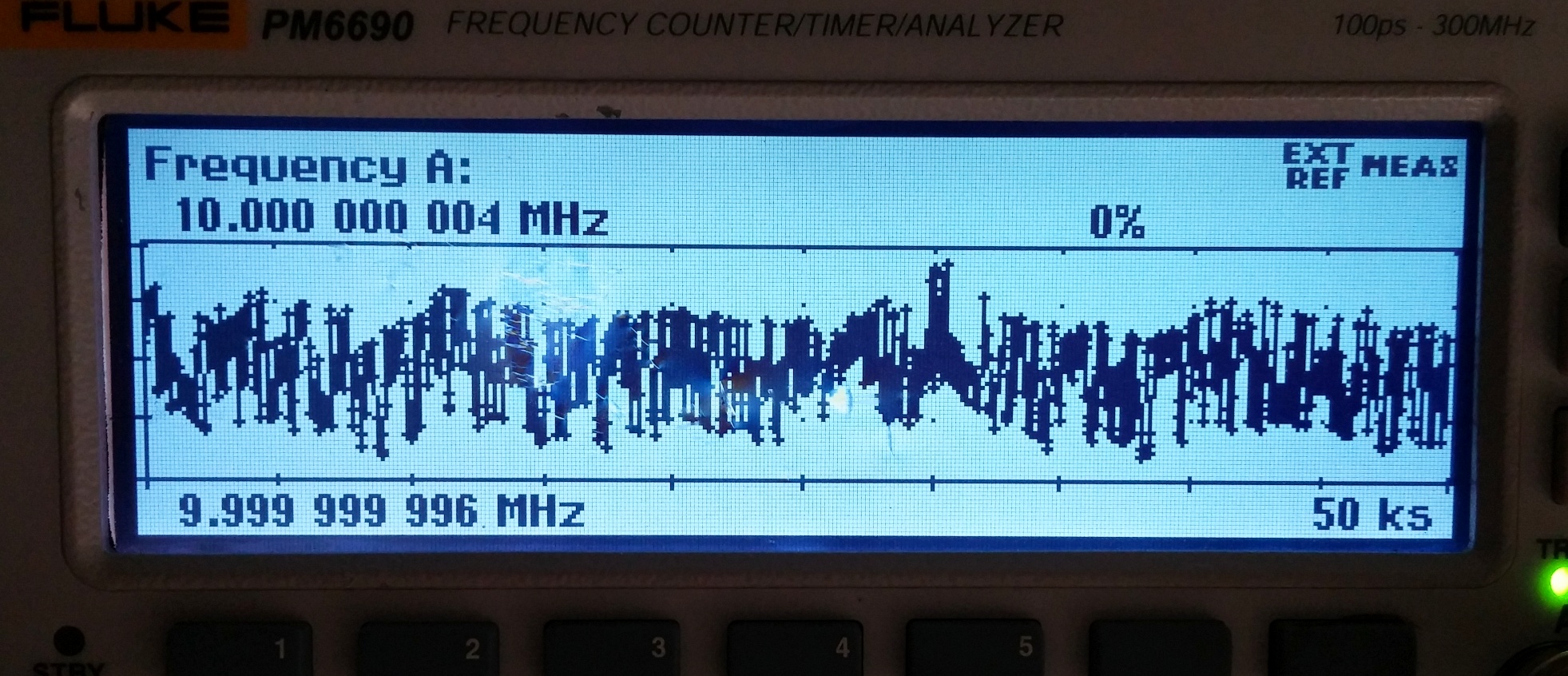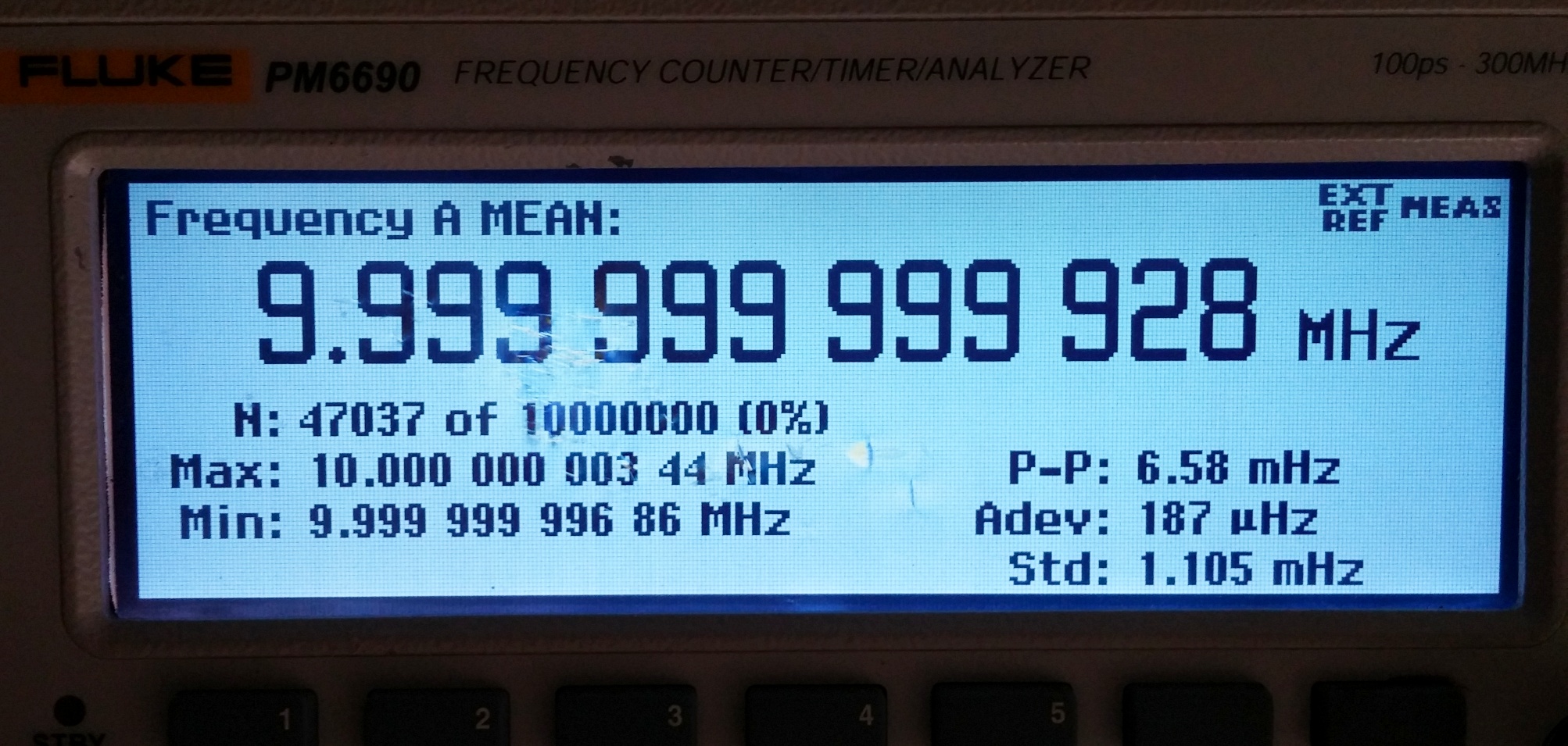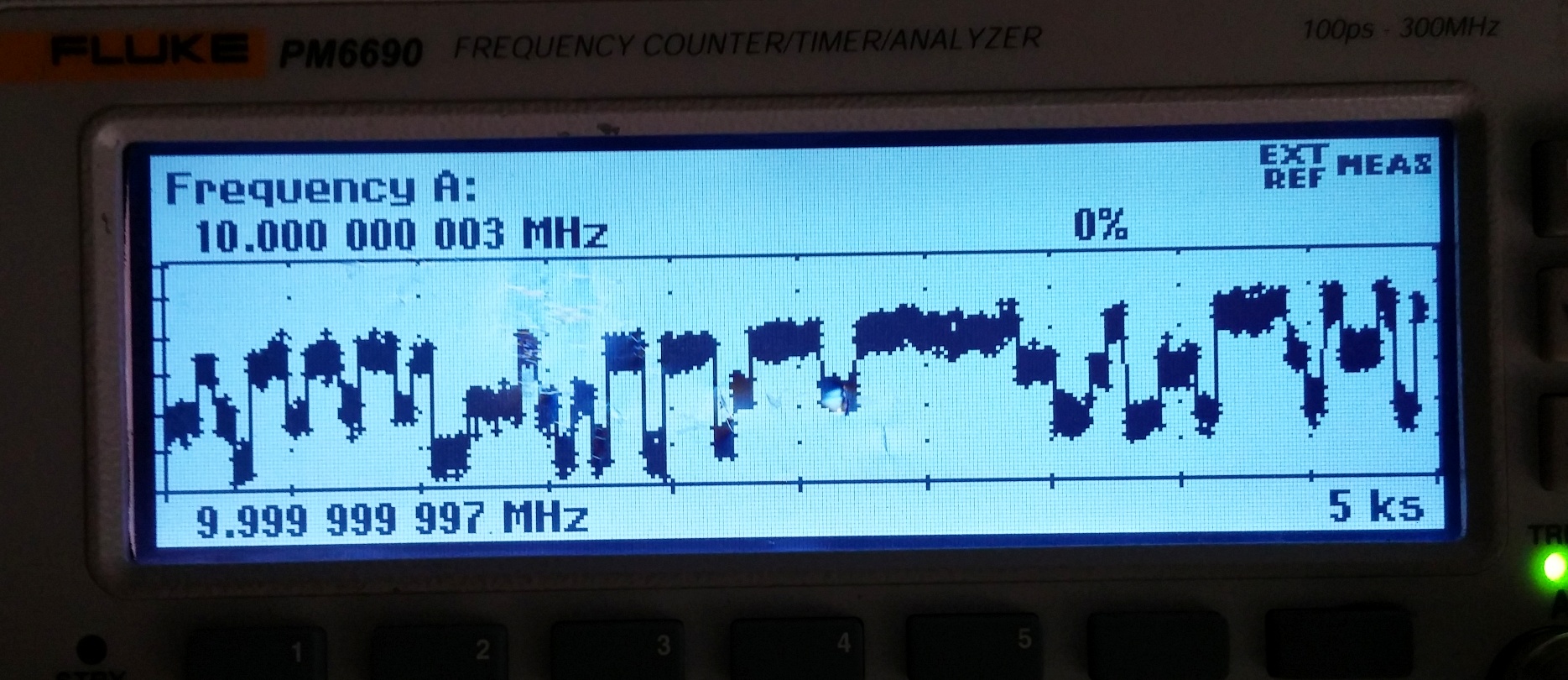Well I've got good news. The drift in my initial results seems to be entirely because of the unlocking GPS. The unit is not without its quirks, but it's certainly disciplining to the right frequency, not a high one. This was taken with about 3 days of continuous GPS lock/uptime:


You can see variation, but the unit always compensates for it properly and converges to 10MHz (I actually caught 10.000 000 000 000 several times when watching the samples accrue). Just after 11ks in, I actually took off a bubble wrap bag that had been insulating the unit and keeping it about 5C above normal temperature since the night before, and the result is hardly notable in the noise and was fairly quickly compensated for.
As I mentioned though, it's not entirely without its faults. I had missed the fact that the GPS was unlocked earlier because the normal on behavior, a PPS pulse, is not actually from the GPS, it's from the micro inside. Even though there's a PPS light on the board internally that is only on when locked, the blinking light on the outside goes all the time, and the GPS lock is instead indicated by a second, solid green light.
Another, much more relevant, issue is the way it adjusts. The adjustment step size is fairly large, while I said 1.5mHz before, it's probably closer to 1.6mHz after seeing some more, and another 2-3 bits worth of adjustment on the DAC could make it MUCH smoother. The adjustment algorithm is also fairly quick to respond to changes in the PPS input, and the PPS output from the neo 7M is somewhat noisy, also with its large step adjustment size. The algorithm also seems to have no minimum time between step transitions, and is happy enough to jump two steps at once.... which really seems too aggressive for a reference designed to take hours to settle and stabilize. I took a picture of the graph at a much shorter sample length that demonstrates these fairly quick transitions, and I haven't seen the frequency of adjustments decrease with more uptime. Even with the same DAC, I think limiting the adjustment to one step at a time and perhaps one minute or so in between steps should go a long way towards reducing the frantic variation of the current system. Maybe not a huge improvement, but a free one.

Performance is still good, though, especially given the price. This 2016-05-31 model seems to have fixed any long term frequency drift issues and is disciplining to the correct place.